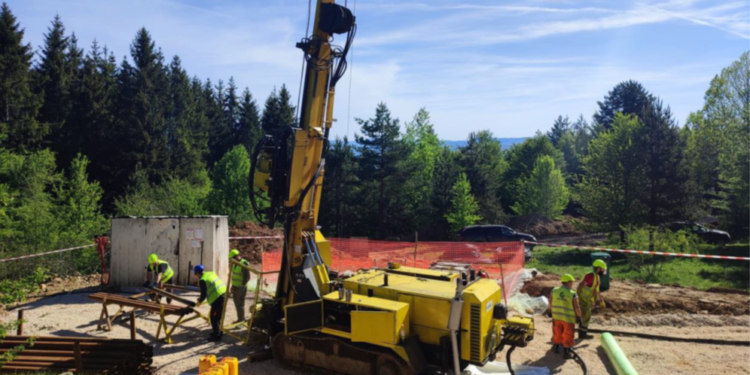Base and precious metals exploration company Lykos Metals Limited (ASX: LYK) has commenced diamond drilling at the Rastovaca – Debela Kosa (RDK) copper-cobalt prospect, part of the company’s 100%-owned Sinjakovo Project in Bosnia-Herzegovina.
The Phase 1 drilling programme consists of 19 diamond holes at 200-metre centres for a total of 4,600 metres and will target copper mineralisation along the interpreted strike of the lithology which hosts the copper mineralisation at the historic mining area.
RDK Prospect
The RDK Prospect comprises the historic copper mine, a 15-16 kt waste rock dump (historically estimated to contain approximately three per cent copper and 35% iron), and a ~3km strike length of favourable siderite-ankerite rock unit that is interpreted to host copper-iron mineralisation.
The copper mine was operational from 1894 until 1910 where reported grades of three to 25% copper ore was extracted from underground tunnels, with the mining operation having ceased once head grades dropped below three per cent copper as, at the time, material grading less than three per cent copper was considered waste and used to backfill tunnels or stockpiled at the portal.
Samples taken in 2021 from the waste dump returned grades of up to 5.21% copper and 965 g/t cobalt, as reported in the Lykos Prospectus of September 2021.
The geology of the prospect consists of younger Triassic limestone and older Carboniferous schists with ankerite-siderite interbeds. Historical geological reports describe the mineralisation as chalcopyrite layers two to 6.5m thick associated with the ankerite-siderite interbeds.
These favourable rock units are concordant and gently dipping, mapped on surface for two km strike length north and one km south of the historic mine.
The quartz-porphyry intrusives found 1km east of the mine are interpreted to be a potential source of the stratabound copper-cobalt mineralisation.
RDK Drilling Plan
Drilling will test two target planes – the primary upper target plane and a deeper hypothetical target plane – which requires deeper drilling past the primary target. Actual end depth of drilling will be subject to observations from ongoing drilling, individual geology in each drill hole and targeting from 3D modelling that is being developed simultaneously.
Drilling is designed to intersect the host lithology at high angle (80-90°) at a projected depth range of 30-210m in vicinity of the historic mine (down-dip, up-dip and lateral from the historic mine), 30-290m north of the mine and 120-140m in the zone south-east of the mine.
This relatively shallow depth of mineralisation will enable fast drill-testing and a relatively inexpensive overall drilling program.
Drillhole SIDD001 has commenced and will test the down-dip extension of the host rock unit to the south of the historic mine where waste dump sampling in 2021 returned grades of up to 5.21% copper and 965g/t cobalt.
Eight diamond holes (including SIDD001) will test the interpreted host lithology near the historic mining area, eight holes will test the northern extent and three will test the southeast extension of the host lithology.
Phase 1 is scheduled to take up to five months to complete with one drilling rig and results will inform Phase 2 drilling which will seek to aggressively test the resource potential at the prospect. Depending upon outcomes the Phase 1 programme may, however, be accelerated through the deployment of a second rig to the programme.
For further information please visit: https://lykosmetals.com/












